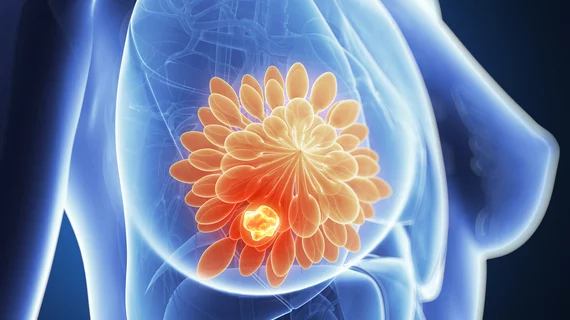Digital breast tomosynthesis does not substantially reduce the risk of false-positive screening results
The growing use of digital breast tomosynthesis to screen for cancer has helped reduce false-positive rates in the U.S. during the past decade, according to research published Friday.
Prevalence of DBT has grown in recent years as radiologists transition toward the technology and away from traditional two-dimensional mammography. Researchers recently set out to measure the impact of this change, sharing their results in JAMA Network Open.
Among more than 900,000 individuals undergoing nearly 3 million mammograms, there were some notable differences between the two approaches. Probability of receiving at least one recall for a false-positive imaging exam was 6.7% lower with annual use of DBT compared to 2D mammography. That number fell to 2.4% with biennial screening which, along with older age and nondense breasts, was associated with larger reductions in false positives than the screening modality.
“We were surprised that the newer 3D technology in breast cancer screening does not substantially reduce the risk of having a false positive result after 10 years of screening; however, chances of false positives are much lower with repeated biennial vs. annual screening,” Thao-Quyen Ho, radiologist at the University Medical Center in Ho Chi Minh, Vietnam, research fellow at the UC Davis School of Medicine and co-first author on the study, said in a statement.
Researchers gathered their data prospectively from women imaged between 2005 to 2018 across 126 radiology facilities in the Breast Cancer Surveillance Consortium. Women in the study ranged in age from 40-79 at an average of about 58. Nearly 700 radiologists interpreted the 2,969,055 imaging exams, 15% of which were performed using DBT.
Over 10 years of annual screening, about 49.6% women experienced at least one false-positive recall with DBT vs 56.3% for 2D mammography. Those screened with tomosynthesis also saw a lower false positive short-interval follow-up (16.6% vs. 17.8%) and false positive biopsy recommendation rates (11.2% vs. 11.7%). Meanwhile, regardless of modality, the probability of false-positive results was lower for every-other-year screening compared to annual exams.
“The screening technology did not have the largest impact on reducing false positives,” Michael Bissell, an epidemiologist in the UC Davis Department of Public Health Sciences and co-first author of the study, said in the statement. “Findings from our study highlight the importance of patient-provider discussions around personalized health. It is important to consider a patient’s preferences and risk factors when deciding on screening interval and modality.”

